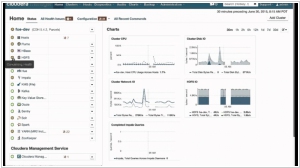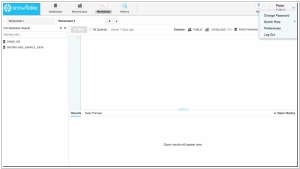Cloudera vs Snowflake
March 19, 2025 | Author: Michael Stromann
12★
Cloudera helps you become information-driven by leveraging the best of the open source community with the enterprise capabilities you need to succeed with Apache Hadoop in your organization. Designed specifically for mission-critical environments, Cloudera Enterprise includes CDH, the world’s most popular open source Hadoop-based platform, as well as advanced system management and data management tools plus dedicated support and community advocacy from our world-class team of Hadoop developers and experts. Cloudera is your partner on the path to big data.
22★
Snowflake is the only data platform built for the cloud for all your data & all your users. Learn more about our purpose-built SQL cloud data warehouse.
See also:
Top 10 Big Data platforms
Top 10 Big Data platforms
Cloudera and Snowflake are both incredibly clever ways for businesses to deal with an incomprehensible amount of data, which, if left unchecked, might one day rise up and demand voting rights. They both let you poke at your data with SQL, store it across various cloud platforms and come with enough security measures to keep out everyone except that one guy in the office who always forgets his password but somehow still has access. They are, in essence, modern magic boxes for companies that don’t really know what to do with all the numbers they’ve been hoarding.
Cloudera, being the older and more experienced of the two, emerged in 2008 when people still thought Hadoop was a good idea. It is particularly good at dealing with truly enormous, messy data sets, much like a university professor reluctantly sorting through decades of unread emails. It runs on-premises, in the cloud or both, depending on how much control (or suffering) you’d like to retain. It thrives in complex environments where data engineers speak in hushed, reverent tones about distributed computing and can support everything from machine learning to convoluted ETL processes that seem designed solely to confuse interns.
Snowflake, meanwhile, arrived in 2012, took one look at all the infrastructure chaos and said, "Nope, let’s just do this in the cloud." It doesn’t need babysitting—no servers to manage, no hardware to maintain—just pure, blissful, pay-as-you-go data warehousing. It scales up, scales down and generally behaves itself unless you forget to turn off a massive query and wake up to an eye-watering bill. Unlike its older cousin, Snowflake is built for business analysts who want to analyze data rather than wrestle with it and it comes with fancy features for sharing datasets, real-time analytics and making accountants feel slightly less nervous about cloud expenses.
See also: Top 10 Big Data platforms
Cloudera, being the older and more experienced of the two, emerged in 2008 when people still thought Hadoop was a good idea. It is particularly good at dealing with truly enormous, messy data sets, much like a university professor reluctantly sorting through decades of unread emails. It runs on-premises, in the cloud or both, depending on how much control (or suffering) you’d like to retain. It thrives in complex environments where data engineers speak in hushed, reverent tones about distributed computing and can support everything from machine learning to convoluted ETL processes that seem designed solely to confuse interns.
Snowflake, meanwhile, arrived in 2012, took one look at all the infrastructure chaos and said, "Nope, let’s just do this in the cloud." It doesn’t need babysitting—no servers to manage, no hardware to maintain—just pure, blissful, pay-as-you-go data warehousing. It scales up, scales down and generally behaves itself unless you forget to turn off a massive query and wake up to an eye-watering bill. Unlike its older cousin, Snowflake is built for business analysts who want to analyze data rather than wrestle with it and it comes with fancy features for sharing datasets, real-time analytics and making accountants feel slightly less nervous about cloud expenses.
See also: Top 10 Big Data platforms





